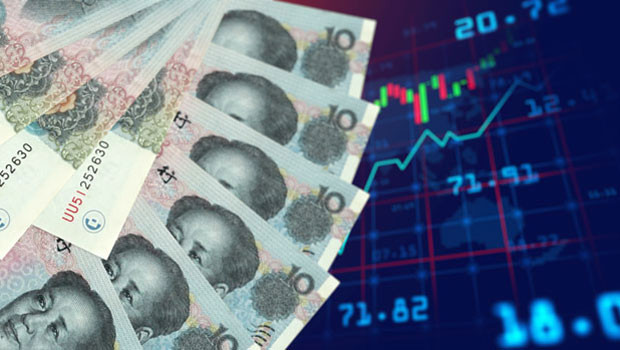Asia report: Stocks mixed as PBoC maintains loan prime rates

Asia-Pacific markets displayed a range of outcomes on Wednesday as investors continued to process the latest central bank decisions.
Equities in Japan led the gains one day after the Bank of Japan maintained its ultra-easy negative interest rate policy.
On Wednesday, the People's Bank of China stood pat on both its one-year and five-year loan prime rates.
"As expected, no change in benchmark lending rates was forthcoming from the People's Bank of China overnight, though speculation is rife that further easing will be announced in the New Year," said analysts at RaboResearch.
"Yesterday morning, it was the yen that was falling hardest, though it has since pulled back from its lows.
"The sharpness of yesterday's move illustrates that the market was expecting more hawkish rhetoric from the Bank of Japan's December policy meeting."
RaboResearch said that, like other central banks, BoJ governor Kazuo Ueda hinted that policymakers wanted to see more data before being convinced that a policy move was warranted.
"This left the market essentially without any firm forward guidance, though surveys indicate that April is currently the favoured month for a rate hike amongst BoJ watchers.
"This would allow the central bank to digest the outcome of the 2024 spring wage talks."
Markets in a mixed state across Asia-Pacific region
Japan's Nikkei 225 index continued its upward trajectory, surging by 1.37% to reach 33,675.94 points, while the Topix index saw gains of 0.67% to close at 2,349.38.
The positive momentum on Tokyo's benchmark was led by Toppan Printing, up 8.45%; Sumitomo Dainippon Pharma, up 5.62%; and Kawasaki Kisen Kaisha, up 5.58%.
Mainland China's markets experienced declines, with the Shanghai Composite index falling 1.03% to 2,902.11 points and the Shenzhen Component index dropping 1.41% to 9,158.44.
Founder Securities plummeted 10% in Shanghai, while Inly Media recorded a 9.99% loss.
Hong Kong's Hang Seng Index posted a modest gain of 0.66%, closing at 16,613.81, led by Country Garden Services, up 5.24%; Sands China, up 5.13%; and JD.com, up 3.6%.
South Korea's Kospi added 1.78% to reach 2,614.30, as HMM saw an impressive gain of 19.91%, while Hanjinkal rose 13.61%.
Australia's S&P/ASX 200 index saw a 0.65% increase, closing at 7,537.90 points, with the top gainers including Emerald Resources, up 7.24%, and Genesis Energy, up 6.82%.
New Zealand's S&P/NZX 50 index experienced a slight decline of 0.32%, closing at 11,579.80 points.
KMD Brands recorded a 3.9% decrease, while Heartland Group saw a 3.27% loss.
In currency markets, the dollar was last down 0.27% on the yen, trading at JPY 143.45.
Meanwhile, the greenback was mixed against its downunder counterparts, rising 0.02% against the Aussie to AUD 1.4790, while it decreased 0.21% on the Kiwi to change hands at NZD 1.5910.
Oil prices showed gains, with Brent crude futures last up 1.21% on ICE at $80.19 per barrel and the NYMEX quote for West Texas Intermediate increasing 1.38% to $74.96.
People's Bank of China keeps loan prime rates steady
In economic news, the People's Bank of China (PBoC) decided to maintain the one-year and five-year loan prime rates (LPR) for December on Wednesday.
The one-year LPR would remain at 3.45%, while the five-year rate would stay at 4.2%.
It marked the fourth consecutive month that the PBoC had chosen to keep the one-year LPR unchanged, following its reduction from 3.55% to 3.45% in August.
The five-year LPR has remained steady at 4.2% for six months, with the last adjustment in June when it was lowered from 4.3%.
Last week, the central bank kept the one-year medium-term lending facility (MLF) rate unchanged at 2.5%.
At the same time, it made a net injection of CNY 800bn via MLF funding to facilitate additional sovereign bond issues by making the system's liquidity more readily available.
That was more than its CNY 600bn net injection in October
"The Bank had opted for MLF funding instead of a reserve ratio requirement (RRR) cut, against our expectations," said Pantheon Macroeconomics senior China economist Kelvin Lam.
"We think an RRR cut would have a stronger signalling effect to the market and would not require assets from borrowers as collateral.
"In any case, we think monetary policy is playing a secondary role in supporting the economy, while fiscal policy is taking the leading role."
Reporting by Josh White for Sharecast.com.